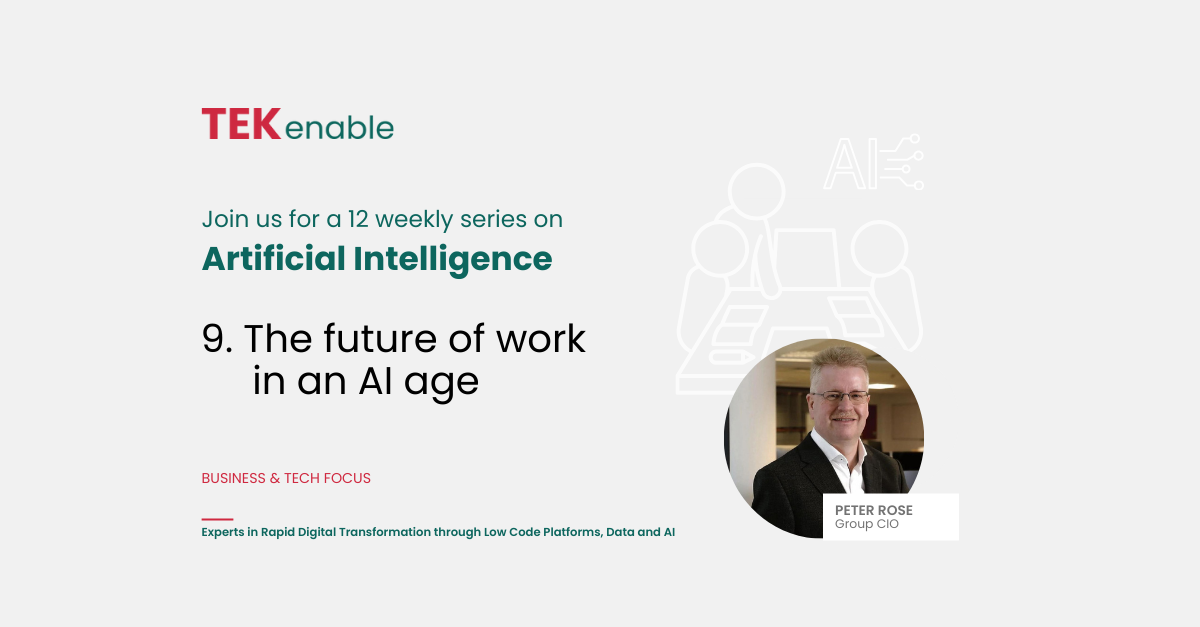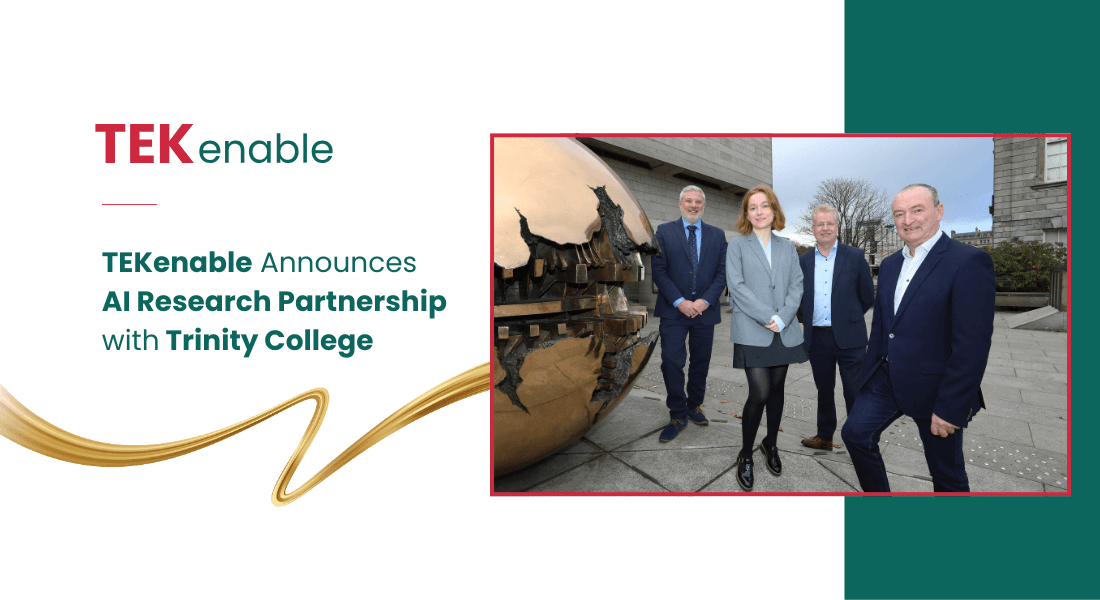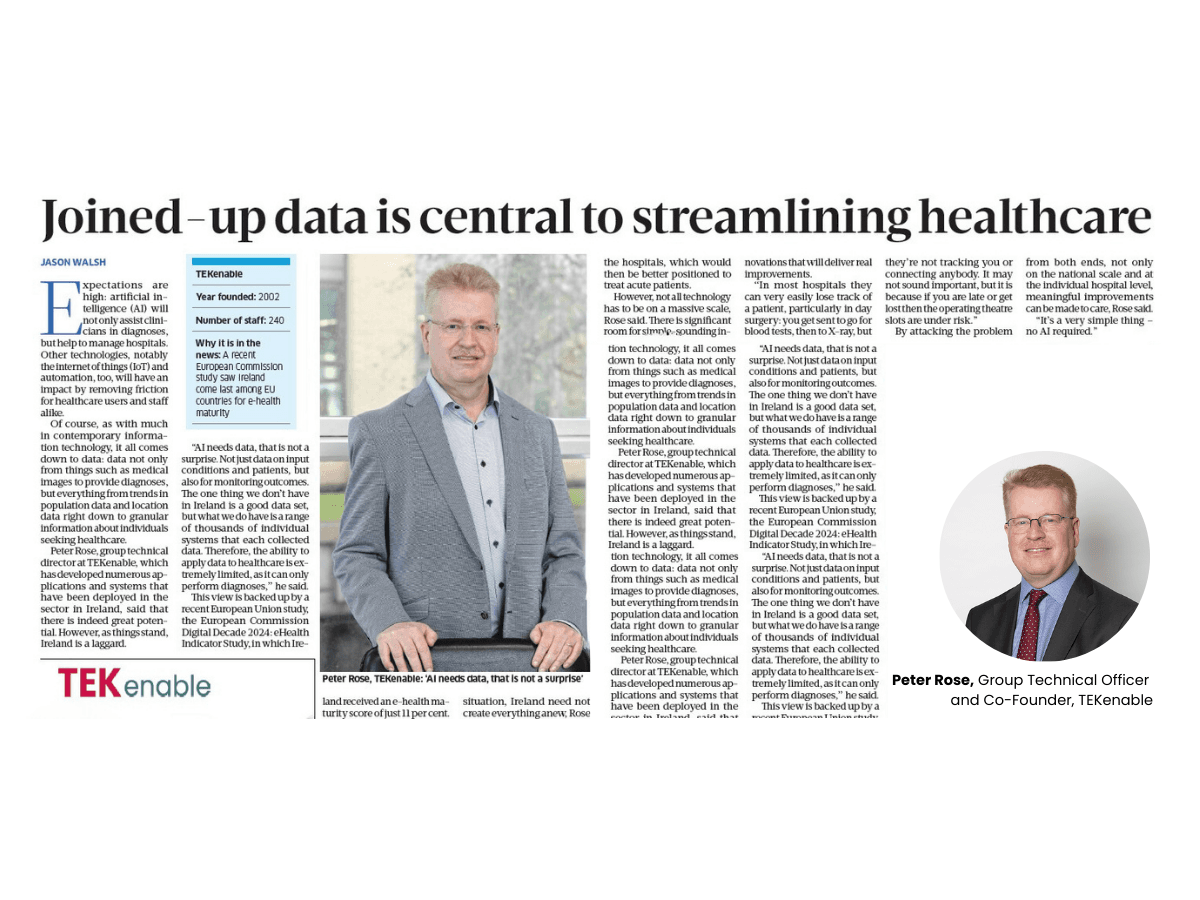Generative AI is already transforming work by enhancing productivity and enabling job applications, but its most profound effects are yet to be felt.
Is a robot coming for your job? Will the rise of artificial intelligence (AI) lead to a life of leisure? Or to the dole queue?
Since the public launch of ChatGPT 3.5 in November last year, much has been made of how automation is coming to take away our jobs. Just as the arrival of machines onto production lines drastically reduced employment in manufacturing, now the same fate awaits white collar, and even creative, workers. Lawyers, accountants, artists, writers and, most of all, computer programmers are all headed for the scrapheap of history, we are told, as algorithms muscle in to do their jobs – and do them more efficiently to boot.
It all seems a bit unlikely, though. Alarming as the prospect of the ‘jobpocaclypse’ is, it fundamentally misunderstands the impact of technology on work. And there is plenty of historical evidence to back this up.
A brief history of idleness
Let’s face it: the leisure society never arrived. Despite confident predictions made in the 1960s, the arrival of computation into the workplace did not usher in a sybaritic society. Indeed these and even earlier predictions, not least that of economist John Maynard Keynes who in the 1930s believed humanity was on the march toward a 15-hour work week, will seem comical to anyone today buried in a blizzard of e-mails, Teams meetings and Slack notifications (not to mention the actual work they still have to do).
A cynic might even argue that no labour-saving device has ever actually reduced the amount of work that we do. Washing machines, for instance, drastically reduced the labour involved in some of the most back-breaking and time-consuming housework, but we filled the free time with… more labour.
Put less cynically, machines alter our relationship with work, they do not eliminate it – and there is no reason to think that AI will be any different. The typewriter, the word processor, the calculator and spreadsheet have each in turn transformed the working lives of secretaries, journalists, diplomats, accountants, lawyers and more, but they have not ushered in a rash of P45s.
We do know that working hours have declined over the decades, but putting this down to the arrival of technology is too mechanistic an analysis. The economic conditions in a country (which does include the nature of the work being done, how automated it can be, and the capital available for automation) is a significant factor that has to be understood.
Consider this: in 2012, not long after the height of the Eurozone economic crisis, the average Greek worker put in 2,017 hours of work. His or her German counterpart, meanwhile, clocked-in for just 1,408 hours. And in the final analysis productivity, too, must be factored in. In short, “machines-in means people-out” is not really an answer to the question of what AI will mean for the workplace.
Workplace AI today
Of course, it would be equally foolish to argue that AI’s impact on the workplace would be minimal. It is certainly possible that individual jobs and job categories may, over time, be eliminated. Even members of the professions, notably law and medicine, have been warned that they “cannot just rely on selling the time of their people”.
Across all industries, workers have expressed concern about the march of the machines into areas once vouchsafed for humanity. A survey conducted by social network LinkedIn found 45 per cent of respondents predicted it would cause a “significant” change to their jobs in the next year, with “more than a third both feeling overwhelmed and worried they won’t be able to keep up” with the developments AI will mean for their workplaces.
This is not surprising: think of the developments in highly-specialised areas, including translation, writing, illustration and even medical image analysis. AIs have demonstrated abilities in these areas that go far beyond robotic process automation (RPA).
This is obviously a cause for concern for many. According to a report by the think tank the Centre for European Policy Research (which drew on Eurostat data for its study), “between 23 and 29 per cent of total employment in the European countries [studied] was in occupations highly exposed to AI-enabled automation. These occupations mostly employ high-skilled, high-paid workers, in contrast with other technologies such as software”.
In the US, think tank The Conference Board said “56 per cent of workers are using generative AI on the job, with nearly one in ten employing the technology on a daily basis”, and this despite the fact that, it said, three-quarters of organisations do not have an AI strategy.
To be honest, 56 per cent sounds a little on the high side, and may reflect either a self-selecting group of respondents or a sectoral or professional bias. However, it is clear that AI is being used by and in businesses, including, and perhaps especially, on an ad hoc basis.
Notably, however, AI does appear to be finding a role in the upper echelons of business: according to Boston Consulting Group, 80 per cent of business leaders say that they use generative AI regularly whereas only 20 per cent of frontline employees say that they do so.
Work tomorrow
For an insight into how AI will change the world of work tomorrow it makes sense to look at what is happening today and extrapolate out.
The two most immediate impacts of AI will be automation and augmentation.
- AI can automate routine and repetitive tasks, such as data entry, accounting and customer service, freeing-up workers’ time and energy for more creative and complex tasks, as well as reduce human errors and costs.
- AI can augment human capabilities, such as memory, communication, analysis and even creativity, thus enhancing workers’ productivity, quality and ability to innovate, as well as enabling new forms of collaboration and interaction.
We can see both of these at work already. The US Department of Labor, for instance, lists eighteen use cases for AI just for its own internal use, from form recognition to translation to electronic records management. Alternatively, consider accounting, where a reduction in book-keeping does not lead to de-professionalisation but the ability for accountants to get on with accounting rather than spend their time on data entry.
More broadly, it can be said with some confidence that AI has the potential to transform the nature and structure of work, including the tasks, roles, skills and relationships involved. This could create new opportunities for workers to learn, grow, and also adapt to changing demands and environments.
However, it could also create new problems. Concern is growing that AI filtering of applications is hurting candidates’ ability to get jobs, as is concern about AIs codifying human factors of discrimination and bias in application processing. In addition, Eurofound, the EU’s labour statistics research agency, has argued that the negative implications of AI at work might include degradation of working conditions and loss of autonomy as algorithms could dictate pace of work.
Neither industries nor workers’ representatives are ignoring this. In a likely sign of things to come, 2020 and 2021 saw the social partners in the EU telecommunications and insurance sectors respectively issue sectoral-level texts on AI in the form of joint declarations calling for a “human in control principle” and noting that “it is important that the social partners engage in social dialogue” to promote the responsible use of AI.
It should also be noted that AI will create jobs. We can see this on a small scale today, and expect more as the applications and technologies mature and create new use cases. For instance, CNBC reports that AI-related job postings on freelancing web site Upwork have increased by a thousand per cent year-on-year. This is likely just a drop in the bucket, as new categories of jobs related to AI come to be created and existing ones, such as data scientist, become more and more important. Indeed, AI systems themselves require armies of machine learning engineers and specialist researchers in order to move forward.
This is the norm, historically speaking. Research published in 2022 by MIT economist David Autor found that, in 2018 60 per cent of workers in the US worked in occupations that did not exist in 1940.
Beyond that, by using AI to increase efficiency organisations will create new roles. Taking healthcare as just one example, the ability to collect and analyse data, such as patient flow or epidemiological data, will drive demand for data professionals to assist medical administrators and doctors.
Businesses and workers alike, however, would do well to prepare for the future. Doing this does not mean imagining “prompt engineer” will become a career option (it probably won’t), but it does mean familiarising themselves with the basics of how AI works and how it can be used to assist with a range of tasks. This should include understanding its limitations: consider it a warning, perhaps, but a recent study, conducted by Boston Consulting in association with Harvard, Wharton and MIT, found that while AI use can make workers “significantly more productive” in some tasks, it can actually impair results in more complicated areas if users uncritically accept their output.
In the end, then, AI, as with everything else, always comes down to people and the choices we make.





